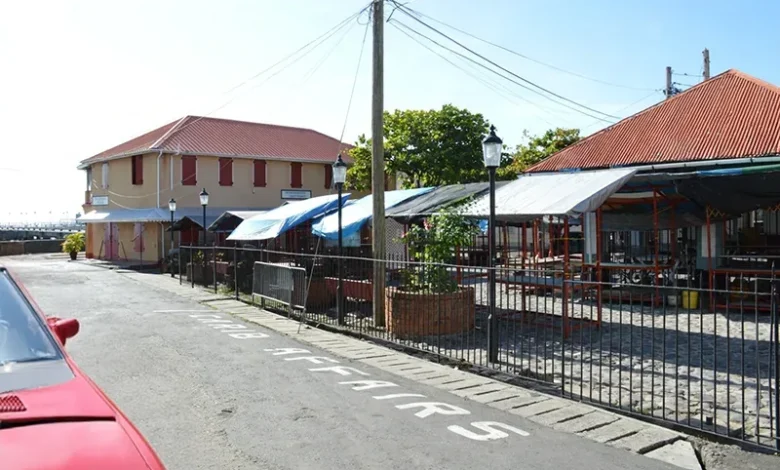Roseau Old Market

The Roseau Old Market, is historic in the heart of Roseau, Dominica. This site holds significant historical importance as it was the centre of the island’s colonial slave trade and the location of public executions during the colonial period. The market’s history dates back over 300 years, serving as a vital hub for trading and political gatherings.
Roseau Old Market Design and Symbolism
Roseau Old Market, also known as Old Market Plaza and Dawbiney Market Square, is characterized by its cobblestone paths and colonial architecture, which have withstood the test of time. Situated behind the Dominica Museum and close to Dominica’s Cenotaph and Fort Young Hotel, the market’s location highlights its importance in the socio-economic activities of Roseau. Historically, it was a bustling center where commodities were traded between Dominica and surrounding islands. The market was also a place where enslaved Africans were sold and publicly executed, marking it as a poignant symbol of the island’s colonial past.
The Roseau Old Market is a vibrant arts and crafts market today. Vendors sell various items, including handmade jewellery, spices, local produce, and souvenirs, attracting locals and tourists. This transformation from a site of historical atrocities to a centre of cultural celebration highlights the resilience and progress of the Dominican people. The market is a focal point during cultural events and festivals, reflecting its enduring significance in Dominica’s cultural landscape.
The Neg Mawon Emancipation Monument is located nearby. It commemorates the Maroons who escaped slavery and contributed to the island’s fight for freedom. The monument and the market are powerful reminders of Dominica’s history and the enduring spirit of its people.
The Roseau Old Market is a significant landmark in Dominica’s rich and complex history. From its dark days as a center of the slave trade to its current role as a bustling market and cultural hub, it remains an integral part of Roseau’s urban and cultural identity. The market continues to draw visitors and locals alike, offering a unique glimpse into the island’s past and present




